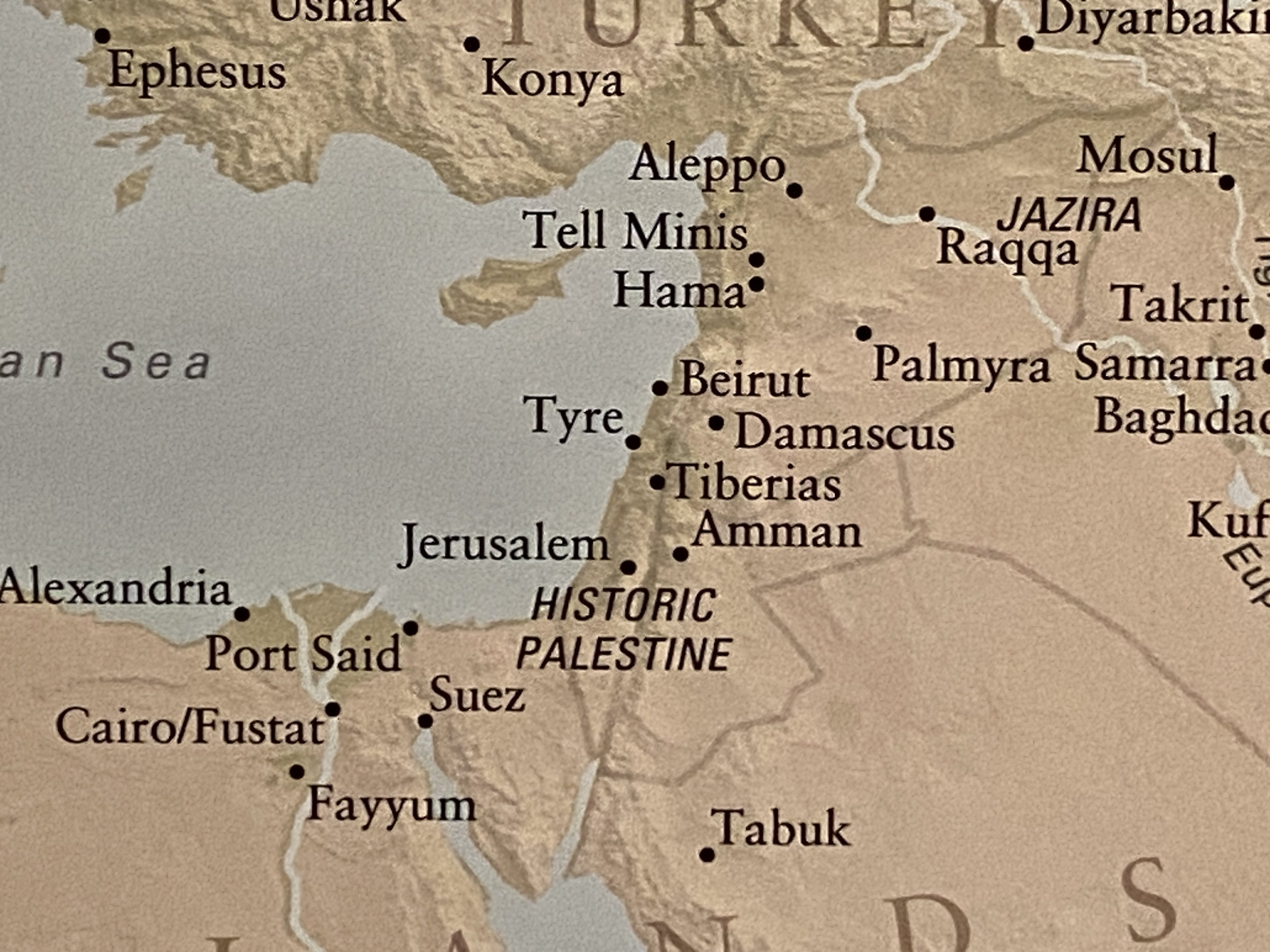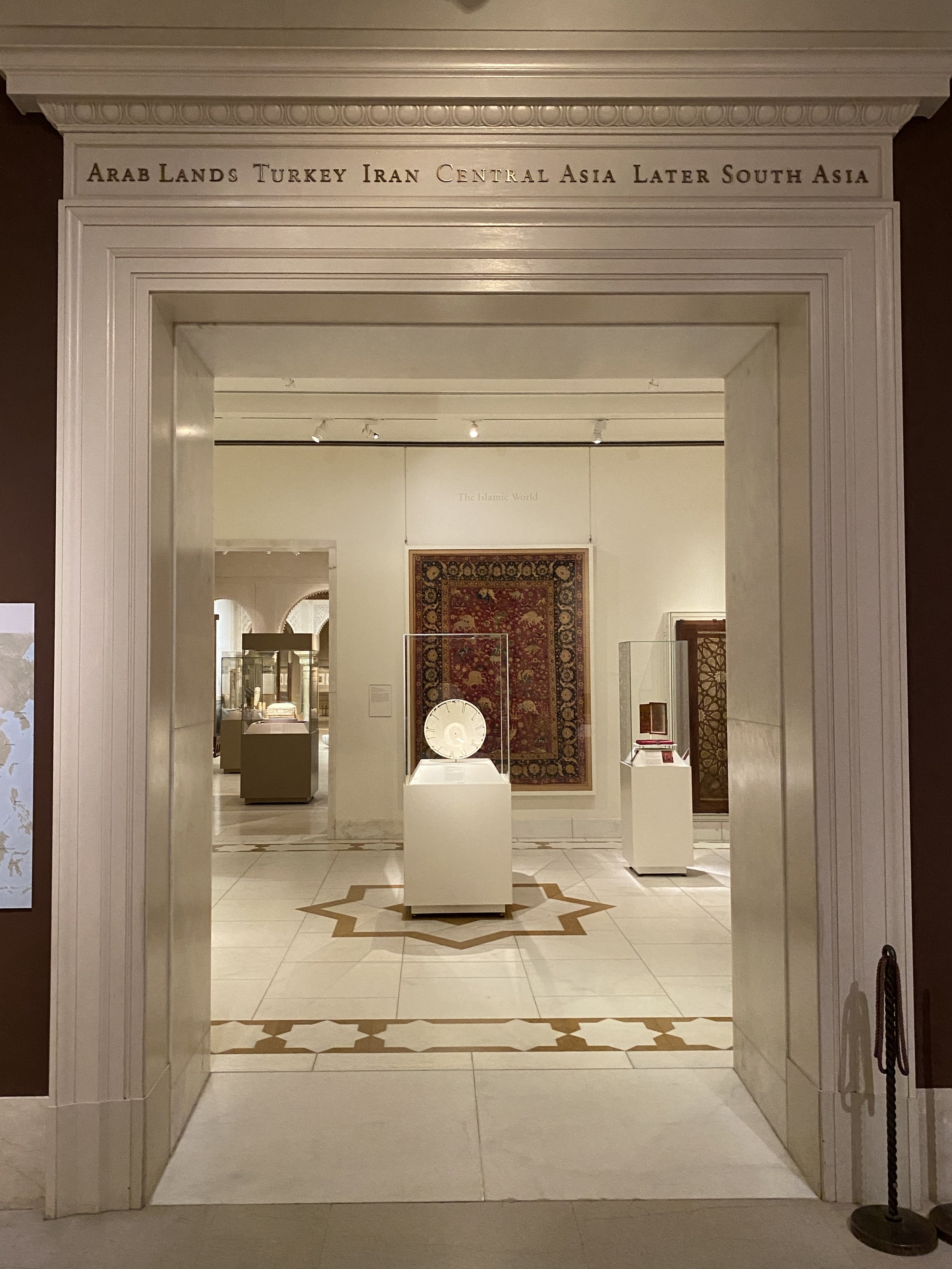



Since 2019, I have been conducting independently-funded research at The Metropolitan Museum of Art. During this time, I have investigating the Palestinian and Syrian textile collections, completing 15+ study sessions and a comprehensive review of all objects with the curatorial team. Thanks to you, the donors who have contributed towards my next book project, I have been able to conduct this research in the first place. I have also obtained permission to publish my research in my forthcoming publication that highlights the beauty of The Met’s collection, since it is not on view and not available to the larger Palestinian community who wishes to learn about the collection.
Last week, I received a delightful call from the museum, sharing that they had updated the gallery map to include “Historic Palestine” as a part of the work we’ve engaged in over the past three years. I had planned a visit to The Met the first weekend of December, and looked forward to seeing this small, exciting change straight away.
Yesterday, ahead of a study session at The Met, I searched far and wide for this map, and found it at the entry way of the Art of Arab Lands gallery, titled “Arab Lands, Turkey, Iran, Central Asia, Later South Asia” on the second floor. It is a permanent gallery, with a large map in the entry way that introduces visitors to the Islamic arts. Palestinian embroidery, while not historically belonging to a particular religion, is categorized as “Islamic Arts” in Western museum tradition, and therefore this change to the permanent map was an exciting precursor for what may grow from my research at The Met.
The entry of The Art of Arab Lands gallery introduces a variety of artists, mediums, genres, themes, functions, periods and geographies representing the larger suite of fourteen galleries devoted to the arts of the Islamic world. The gallery intends to reflect the diversity of this part of the world, and I am proud that this small, yet important, change to the gallery map was made.
My hope is that the future of my work continues to support the ever-evolving storytelling that the current staff at The Met has dedicated their professional careers to, and that they continue to include indigenous voices in the narration of the stories told.
